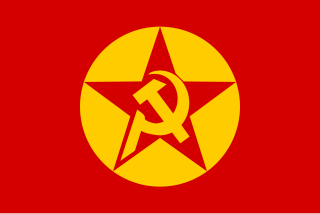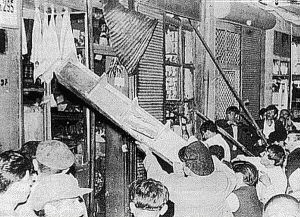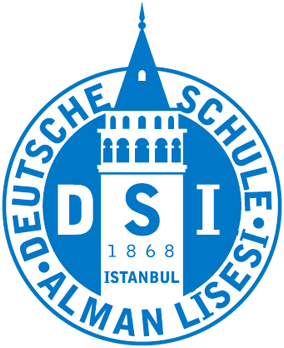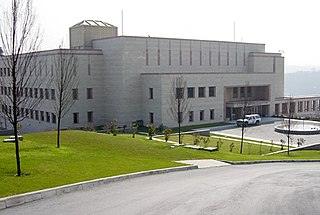
Neve Shalom Synagogue is a synagogue in the Karaköy quarter of Beyoğlu district, in Istanbul, Turkey.

The Revolutionary People's Liberation Party/Front is a Marxist–Leninist communist party in Turkey. It was founded in 1978 as Revolutionary Left, and has been involved in a militant campaign against the Republic of Turkey since the 1980s. It was renamed in 1994 after factional infighting. It is classified as a terrorist group by Japan, Turkey, the United States, the United Kingdom and the European Union.

Beyoğlu is a municipality and district of Istanbul Province, Turkey. Its area is 9 km2, and its population is 225,920 (2022). It is on the European side of Istanbul, Turkey, separated from the old city by the Golden Horn. It was known as the region of Pera surrounding the ancient coastal town Galata which faced Constantinople across the Horn. Beyoğlu continued to be named Pera during the Middle Ages and, in western languages, into the early 20th century.

The Istanbul pogrom, also known as the Istanbul riots, were a series of state-sponsored anti-Greek mob attacks directed primarily at Istanbul's Greek minority on 6–7 September 1955. The pogrom was orchestrated by the governing Democrat Party in Turkey with the cooperation of various security organizations. The events were triggered by the bombing of the Turkish consulate in Thessaloniki, Macedonia, Greece, – the house where Mustafa Kemal Atatürk was born in 1881. The bomb was actually planted by a Turkish usher at the consulate, who was later arrested and confessed. The Turkish press was silent about the arrest, and instead, it insinuated that Greeks had set off the bomb.

Deutsche Schule Istanbul, with formal Turkish name Özel Alman Lisesi or İstanbul Alman Lisesi or simply Alman Lisesi is a private international high school in the Beyoğlu district of Istanbul, Turkey. It is responsible to both the Federal Ministry of Education and Research of Germany and the Ministry of National Education of Turkey.
The following is a list of attacks which have been carried out by Al-Qaeda.

In the morning hours on July 9, 2008, an attack on the Consulate General of the United States, Istanbul resulted in the deaths of the three gunmen and three Turkish National Police officers.
Louai Sakka is a Syrian of Turkish background, who was convicted in Turkey of playing a role in several terrorist bombings. His first conviction was overturned on appeal, and he is currently being re-tried.
The 2012 Gaziantep bombing was a terrorist bomb attack which occurred in the city of Gaziantep, Turkey on 20 August 2012, the second day of the three-day celebrations of "Şeker Bayramı" (Eid-ul-Fitr) that refers to the end of the Islamic holy month of Ramadan.
RedHack is a Turkish Marxist-Leninist computer hacker group founded in 1997. The group has claimed responsibility for hacking the websites of institutions which include the Council of Higher Education, Turkish police forces, the Turkish Army, Türk Telekom, and the National Intelligence Organization others. The group's core membership is said to be twelve. RedHack is the first hacker group which has been accused of being a terrorist organization and circa 2015 is one of the world's most wanted hacker groups.

A wave of demonstrations and civil unrest in Turkey began on 28 May 2013, initially to contest the urban development plan for Istanbul's Taksim Gezi Park. The protests were sparked by outrage at the violent eviction of a sit-in at the park protesting the plan. Subsequently, supporting protests and strikes took place across Turkey, protesting against a wide range of concerns at the core of which were issues of freedom of the press, of expression and of assembly, as well as the AKP government's erosion of Turkey's secularism. With no centralised leadership beyond the small assembly that organised the original environmental protest, the protests have been compared to the Occupy movement and the May 1968 events. Social media played a key part in the protests, not least because much of the Turkish media downplayed the protests, particularly in the early stages. Three and a half million people are estimated to have taken an active part in almost 5,000 demonstrations across Turkey connected with the original Gezi Park protest. Twenty-two people were killed and more than 8,000 were injured, many critically.
The Abu Hafs al-Masri Brigades, or Abu Hafs al-Masri Battalions, is a group which claims to be a branch of the Islamic fundamentalist organisation Al-Qaeda.

Büyükdere Avenue is a major avenue which runs through the districts of Şişli, Beşiktaş and Sarıyer on the European side of Istanbul, Turkey. It begins at Şişli Mosque and runs in an eastward direction partly under the viaduct of the inner-city motorway O-1 through Mecidiyeköy, Esentepe, until reaching Zincirlikuyu; where it joins with Barbaros Boulevard and turns northward passing through Levent, Sanayi Mahallesi, Maslak and by the Fatih Forest, ending at the Hacıosman Slope on the Sarıyer district border. Its total length is 14 km (8.7 mi). From Zincirlikuyu to Maslak, it forms a border line between the districts of Kağıthane in the east and Beşiktaş in the west. It is named after the Büyükdere neighborhood of Sarıyer district, where it connects to. It is a major artery of the Istanbul Central Business District, which is not located in the historic center of the city.
The following lists events from 2003 in Turkey.
The DHKP/C insurgency in Turkey refers to the Marxist–Leninist insurgency waged by the Revolutionary People's Liberation Party/Front (DHKP/C) against the Republic of Turkey, ongoing since 1990. The insurgency began with political assassinations in the early 1990s, and has escalated in the past few years with the use of suicide bombers.

The Turkey–Islamic State conflict were a series of attacks and clashes between the state of Turkey and the Islamic State. Turkey joined the War against the Islamic State in 2016, after the Islamic State attacks in Turkey. The Turkish Armed Forces' Operation Euphrates Shield was aimed against both the Islamic State and the SDF. Part of Turkish-occupied northern Syria, around Jarabulus and al-Bab, was taken after Turkey drove the Islamic State out of it.

On 19 March 2016, a suicide bombing took place in Istanbul's Beyoğlu district in front of the district governor's office. The attack occurred at 10:55 (EET) at the intersection of Balo Street with İstiklal Avenue, a central shopping street. The attack caused at least five deaths, including that of the perpetrator. Thirty-six people were injured, including seven whose injuries were severe. Among those injured were twelve foreign tourists. Among those killed, three were of Israeli nationality. On 22 March, the Turkish interior minister said that the bomber had links with ISIL.

On 3 January 2001, a suicide attack was carried out by Revolutionary People's Liberation Party/Front member Gültekin Koç in Şişli, Istanbul, at a police station. As a result of the explosion, one civilian along with the perpetrator was killed and 7 others were injured, 2 being critically.

The Abdi İpekçi Peace Monument is a monument sculpted by Gürdal Duyar, commissioned by the Şişli Municipality in 2000 in honor of the editor-in-chief of the Milliyet newspaper Abdi İpekçi and erected at the place where he was assassinated in Istanbul, Turkey, in 1979.













